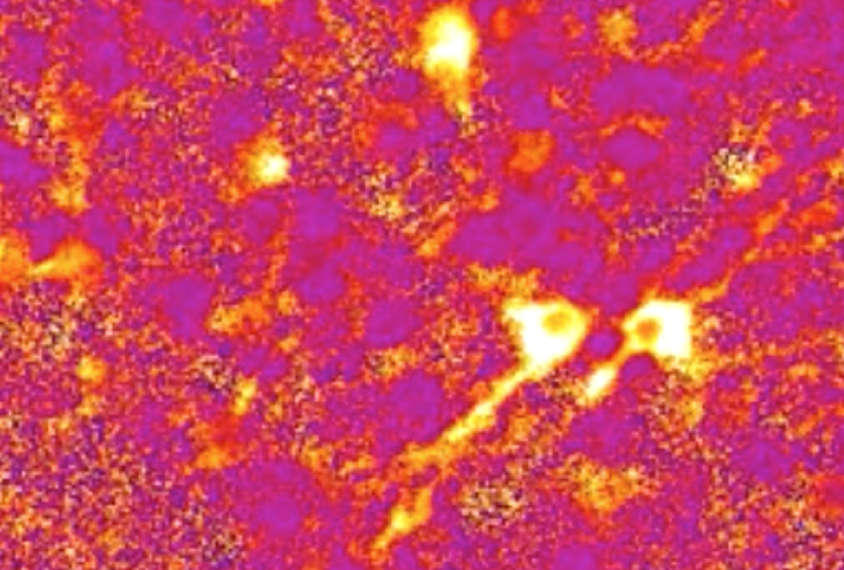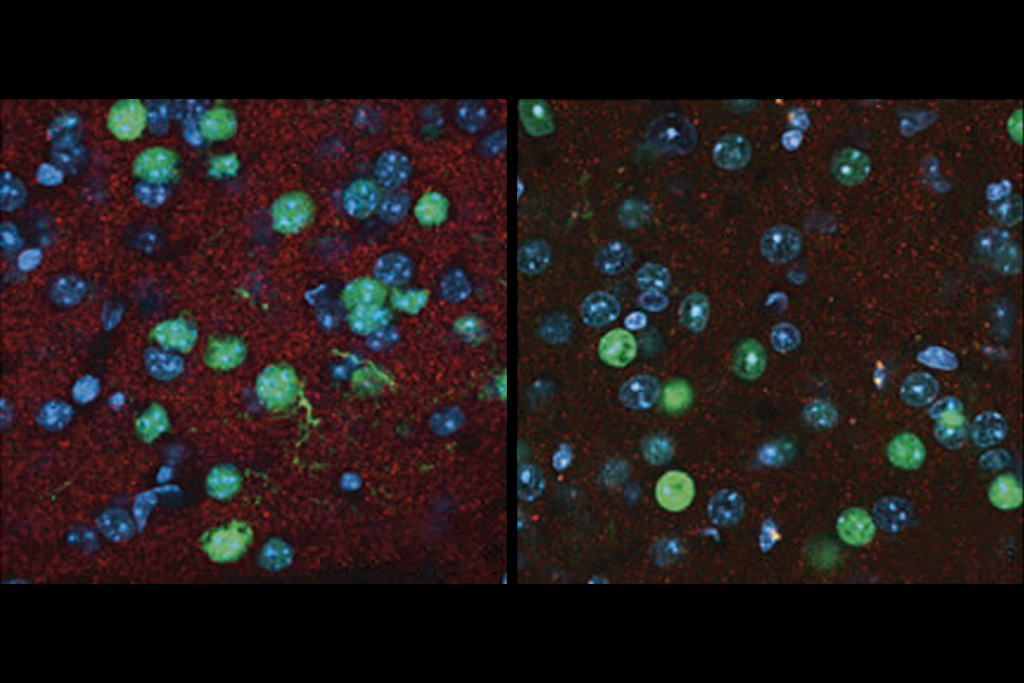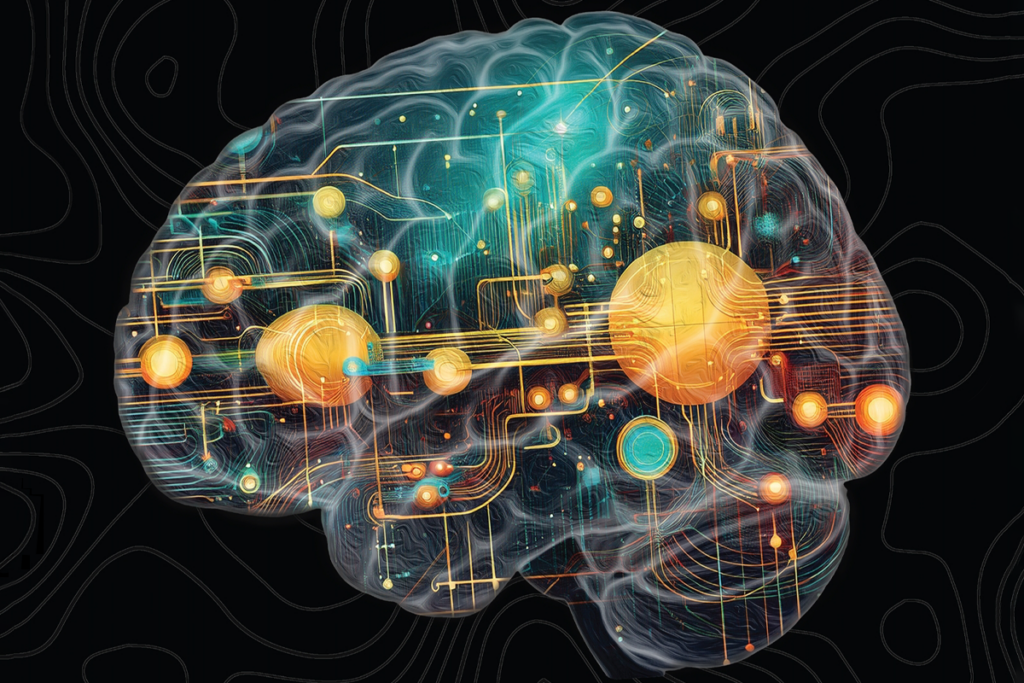New tool provides real-time glimpse of brain activity in mice
A transparent set of electrodes enables researchers to simultaneously record electrical signals and visualize neurons in the brains of awake mice.
A transparent set of electrodes enables researchers to simultaneously record electrical signals and visualize neurons in the brains of awake mice1.
Syncing neuronal signals with videos of neurons helps researchers map those signals to particular sites in the brain. The technology could yield insights into how the brain works and what goes awry in conditions such as autism.
Two-photon calcium imaging and electroencephalography (EEG) are both popular tools for studying the brain, but combining them has proved challenging. In the former technique, researchers tag calcium ions with fluorescent proteins. When neurons fire, a microscope picks up the fluorescence as calcium ions rush into the cells. EEG requires inserting a recording electrode into the brain. However, the electrode blocks light in the area from reaching the microscope.
In the new study, researchers built electrodes that transmit light. They layered a metallic material into a flat plastic mold, roughly the size of a single neuron, that is studded with hundreds of plastic spheres. The material fills the space around the spheres, creating holes that allow light to pass through.

Clear window:
The team assembled 32 of their mesh-like electrodes and tested the assembly in the visual cortex of an awake mouse. They cut a window in the skull to expose the area, injected a fluorescent protein that tags calcium ions and laid the electrodes over the area. A wire connected the electrodes to a recording system.
Three weeks later, the mouse’s head was fixed in place and the animal faced a screen showing moving black and white lines alternating with a gray screen. The researchers monitored the mouse’s pupils as they grew and shrank with the mouse’s changing attention to the images.
Meanwhile, the electrode picked up increases and decreases in neuronal signaling, and the microscope created an image of the active neurons. The researchers were able to match the electrical signals to the image, they reported in September in Science Advances.
The researchers aim to scale up the electrode assembly so it can record and scan larger areas of the mouse brain.
References:
- Qiang Y. et al. Sci. Adv. 4, eaat0626 (2018) PubMed
Recommended reading

Genetic profiles separate early, late autism diagnoses

SHANK3 deficiency and behavior in mice; and more

Autism scientists push back on CDC’s inaccurate vaccine claims
Explore more from The Transmitter

Beyond the algorithmic oracle: Rethinking machine learning in behavioral neuroscience
